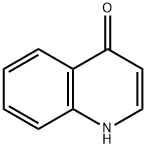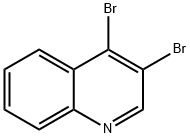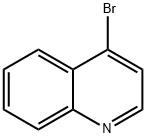
4-Bromoquinoline synthesis
- Product Name:4-Bromoquinoline
- CAS Number:3964-04-3
- Molecular formula:C9H6BrN
- Molecular Weight:208.05
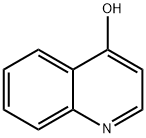
611-36-9

3964-04-3
Step 1: Phosphorus tribromide (7.61 g, 28.2 mmol) was slowly added dropwise to a stirred solution of anhydrous N,N-dimethylformamide (DMF, 30 mL) of 4-hydroxyquinoline (4.00 g, 27.6 mmol) for 10 min under nitrogen protection. The reaction mixture formed a red suspension and continued to stir under nitrogen atmosphere for 30 min. The reaction was monitored by thin layer chromatography (TLC) and after confirming the complete consumption of the raw material, the reaction mixture was quenched in an ice bath and stirred for 30 minutes. Subsequently, the pH of the reaction mixture was adjusted with saturated sodium bicarbonate solution (20 mL) to about 10. The reaction mixture was extracted with ethyl acetate (2 x 100 mL), the organic phases were combined, dried with anhydrous sodium sulfate, filtered and concentrated under reduced pressure. The crude product was purified by silica gel column chromatography eluting with a gradient of dichloromethane/methanol (0% to 10%) to give 4-bromoquinoline (5.04 g, 88% yield) as a yellow solid. The product was detected by liquid chromatography-mass spectrometry (LCMS, ESI) and showed [M+H]+ peak of 208; 1H NMR (400 MHz, chloroform-d) δ ppm: 8.69 (d, J = 4.69 Hz, 1H), 8.20 (ddd, J = 8.39, 0.88 Hz, 1H), 8.08-8.16 (m, 1H), 7.78 ( ddd, J = 8.39, 6.98, 1.37 Hz, 1H), 7.71 (d, J = 4.69 Hz, 1H), 7.66 (ddd, J = 8.31, 7.04, 1.15 Hz, 1H).

611-36-9
390 suppliers
$8.00/5g

3964-04-3
189 suppliers
$26.39/1g
Yield:3964-04-3 88%
Reaction Conditions:
with phosphorus tribromide in N,N-dimethyl-formamide; for 0.666667 h;Inert atmosphere;
Steps:
1.1 Example 1 - Synthesis of Compound 1 (4-Phenylethynyl-quinoline)
Step 1 : To a stirred solution of quinolin-4-ol (4.00 g, 27.6 mmol) in dry DMF (30 mL) was added phosphorus tribromide (7.61 g, 28.2 mmol) dropwise for 10 min. The reddish colored suspension was stirred for 30 min under nitrogen atmosphere. After complete consumption of starting material, the reaction mixture was quenched with ice, stirred for anther 30 min, then basified to pH -10 with a solution of saturated sodium bicarbonate (20 mL). The reaction mixture was extracted with ethyl acetate (2 x 100 mL) and the combined organic phase was dried over anhydrous sodium sulfate, filtered and evaporated in vacuo. The residue was purified on silica gel column using dichloromethane / methanol (0% to 10%) as eluent to give 4-bromo- quinoline (5.04 g; 88%) as a yellow solid; LCMS (ESI) 208 (M+H); H NMR (400 MHz, CHLOROFORM-d) δ ppm: 8.69 (d, J=4.69 Hz, 1 H), 8.20 (dd, J=8 39, 0.88 Hz, 1 H), 8.08 - 8.16 (m, 1 H), 7.78 (ddd, J=8.39, 6.98, 1 .37 Hz, 1 H), 7.71 (d, J=4.69 Hz, 1 H), 7.66 (ddd, J=8.31 , 7.04, 1.15 Hz, 1 H).
References:
WO2014/121883,2014,A1 Location in patent:Page/Page column 51

91-22-5
414 suppliers
$10.00/25g

3964-04-3
189 suppliers
$26.39/1g
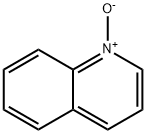
1613-37-2
0 suppliers
$54.31/5G

2005-43-8
212 suppliers
$6.00/250mg

3964-04-3
189 suppliers
$26.39/1g
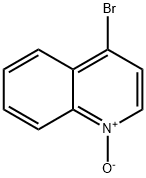
22614-98-8
10 suppliers
inquiry

3964-04-3
189 suppliers
$26.39/1g
